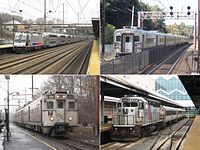Waterfront Connection
40°44′37″N 74°07′36″W / 40.7435°N 74.1267°W
Newark/Hoboken Division approaches | ||||||||||||||||||||||||||||||||||||||||||||||||||||||||||||||||||||||||||||||||||||||||||||||||||||||||||||||||||||||||||||||||||||||||||||||||||||||||||||||||||||||||||||||||||||||||||||||||||||
|---|---|---|---|---|---|---|---|---|---|---|---|---|---|---|---|---|---|---|---|---|---|---|---|---|---|---|---|---|---|---|---|---|---|---|---|---|---|---|---|---|---|---|---|---|---|---|---|---|---|---|---|---|---|---|---|---|---|---|---|---|---|---|---|---|---|---|---|---|---|---|---|---|---|---|---|---|---|---|---|---|---|---|---|---|---|---|---|---|---|---|---|---|---|---|---|---|---|---|---|---|---|---|---|---|---|---|---|---|---|---|---|---|---|---|---|---|---|---|---|---|---|---|---|---|---|---|---|---|---|---|---|---|---|---|---|---|---|---|---|---|---|---|---|---|---|---|---|---|---|---|---|---|---|---|---|---|---|---|---|---|---|---|---|---|---|---|---|---|---|---|---|---|---|---|---|---|---|---|---|---|---|---|---|---|---|---|---|---|---|---|---|---|---|---|---|---|
| ||||||||||||||||||||||||||||||||||||||||||||||||||||||||||||||||||||||||||||||||||||||||||||||||||||||||||||||||||||||||||||||||||||||||||||||||||||||||||||||||||||||||||||||||||||||||||||||||||||
| ||||||||||||||||||||||||||||||||||||||||||||||||||||||||||||||||||||||||||||||||||||||||||||||||||||||||||||||||||||||||||||||||||||||||||||||||||||||||||||||||||||||||||||||||||||||||||||||||||||
The Waterfront Connection allows NJ Transit trains to switch from the former Pennsylvania Railroad main line (now the Newark Division) to the former Delaware, Lackawanna and Western Railroad main line, now NJ Transit Rail Operations. The connection opened on September 9, 1991, at a cost of $16 million.[1]
The connection consists of a single track that splits from the Northeast Corridor main line to New York Penn Station as it rises to go over the main line of NJ Transit Rail Operations to Hoboken. The connection rises to the east with a bridge over PATH's westbound track and a Conrail freight line, merging into the Hoboken line from the south. The red through-girder bridge here was built for it; for its first 10+ years it was not electrified. The Waterfront Connection lies immediately south of the Kearny Connection, and serves the complementary purpose. The two connections allow any trains originating from the west of Kearny, regardless of line, to terminate at either Hoboken or New York Penn Station.
Most revenue trains which travel over the Connection originate on the North Jersey Coast Line, with five rush hour trains in each direction originating/terminating at Hoboken. One morning train from the Raritan Valley Line also uses the connection to reach Hoboken. The Waterfront Connection allows diesel trains to operate direct from Hoboken to Bay Head, the last stop on the North Jersey Coast Line. Since the North Jersey Coast Line's electrification ends at Long Branch, rush hour passengers south of Long Branch can take diesel trains all the way to Hoboken or change at Newark Penn Station for service to New York City. As of 2015, the ALP-45DP has allowed the introduction of one-seat rides from New York Penn Station all the way to Bay Head.
With the advent of the Waterfront Connection, NJ Transit no longer needed a separate fueling facility on the diesel portion of the North Jersey Coast Line since diesel engines can make the trip directly to Hoboken. Faced with pressure from Bay Head residents in 2002, the Bay Head fueling facility was shut down and trains now refuel exclusively at Hoboken or at Raritan Yard.[2]
Predecessor
[edit]As part of NJ Transit's "Bergen Shore Express" summer promotion 1986–1988, NJ Transit Rail Operations trains from the Bergen County Line turned southwest at West End Junction onto the Morris & Essex line, switched onto the Center Street Branch, PATH tracks, and then the Northeast Corridor to head for the North Jersey Coast Line. The switches that allowed this have since all been removed.[3]
References
[edit]- ^ Hanley, Robert (September 10, 1991). "Hoboken-Newark Rail Link Opens as Part of Multimillion-Dollar Expansion". New York Times. Retrieved February 20, 2011.
- ^ New Jersey Chapter - Sierra Club
- ^ Bergen Shore Express article
| Hoboken Division | ||
|---|---|---|
| Newark Division | ||
| Connections | ||
| Current rolling stock | ||
| Bridges and tunnels |
| |
| Stations and yards | ||
| Proposed lines | ||
| Other topics | ||
Text is available under the CC BY-SA 4.0 license; additional terms may apply.
Images, videos and audio are available under their respective licenses.

